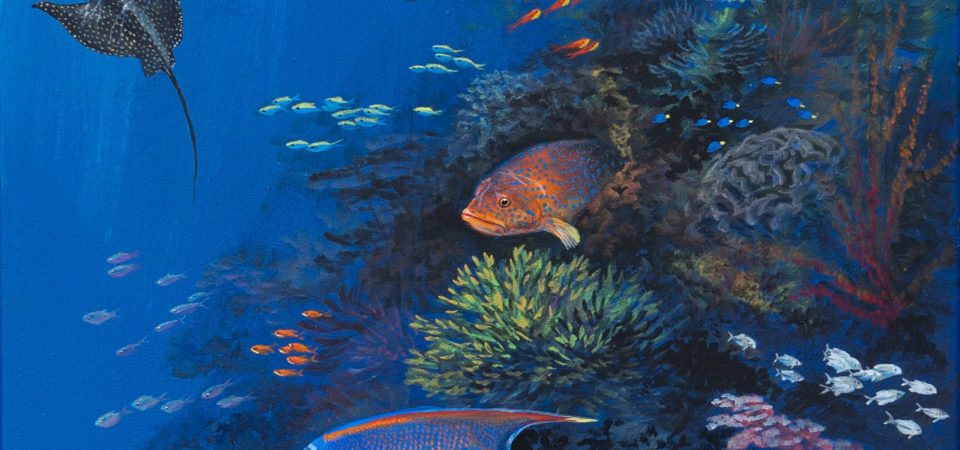At the age of 19, I became a self-taught wildlife artist in my native country of Sri Lanka. I was inspired by the beautiful rainforest country I grew up in and wanted to share the beauty and wonder of nature with those around me. I was fortunate to have raised a baby elephant named Maya, enjoyed my father Sardha’s pet leopard and macaw, and a litany of wildlife around our home. In addition, the Buddhist religion practiced by about 70% of the country since approximately 200 BCE, adheres to respect for all life forms and a genuine appreciation for nature with an emphasis on coexisting with the forest, rather than conquering it. Most believe that people need to live simply and respect the cycle of nature and balance so that everything may continue for future generations, accepting changes in nature as an essential part of growth.
At one of my first art shows in 1979, president JR Jayewardene blessed the ceremony, and over 150 paintings were sold in the exhibit. The Ratnavira name means “Hero of Gems” and our caste is jewelers. After my father saw my success as an artist he gave his blessing on my wildlife art career, versus following the family business of gem and jewelry design.
The president collected my work and named me the Chief Advisor to him on Wildlife and Conservation for the Department of Wildlife. I also designed the logo for the Department of Wildlife and Conservation, which is still in use today.
After touring with Prince Philip through the Country, we worked on “Let them Live”, an elephant conservation program with the World Wildlife Fund together and I designed elephant stamps in addition to 34 other postage stamps for my country.
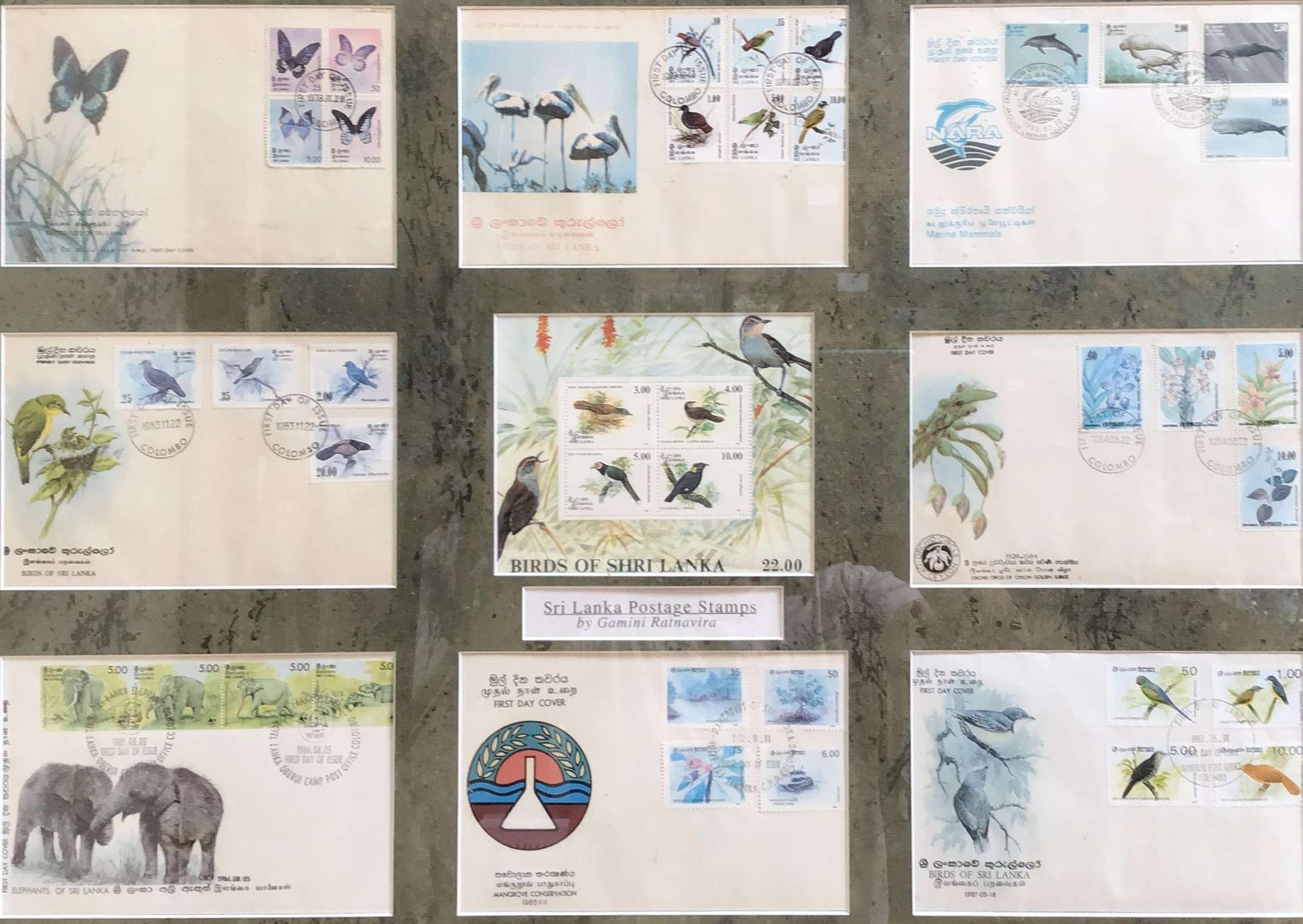
The sea mammal stamps were especially rewarding as they symbolized the safety and sanctuary for the inauguration of the conservation of all sea mammals in the Indian Ocean. A fabulous reflection of the kindness of Sri Lanka.
During the war, I was invited by both the American and Australian Ambassadors to come to their countries and pursue my art career. I have been fortunate to visit over 55 countries keeping detailed sketchbooks, taking photos, and creating paintings from these travels.
I paint a window into nature paying close attention to symbiotic relationships and matching the flora and fauna to their true environment to capture the beautiful and accurate relationships in nature.
I have illustrated Vanishing Wildlife of Texas, Lories and Lorikeets, Birds of Sri Lanka, Mammals of Sri Lanka, Even Frogs Care, Traveling with Pen and Brush, Grief’s Labyrinth and Other Poems, and Gamini Ratnavira: Brushes with Nature. I also contributed to numerous field guides and commissions for the Rare Bird Club of England.
During my time in Sri Lanka, I sold my paintings and supplemented my art career by working as a tour guide. Often clients from all over the world would send me art supplies and purchase paintings from my studio at the end of our birdwatching and nature appreciation tours. I painted over 150 paintings for the Habarana/Cinnamon Lodge through Walker Tours which are currently being exhibited with the Museum of Modern and Contemporary Art in Sri Lanka. In addition, I was commissioned by the President to paint a 9 foot mural of ringneck parakeets, receiving over $237,000 US Dollars for the airport in Colombo Sri Lanka.
After immigrating to the United States in 1986 due to the war in Sri Lanka between the Tamil Tigers and Sri Lankan Singhalese, I began my American art career by opening the Hidden Forest Art Gallery, exhibiting in wildlife art shows such as the Pacific Rim Art Expo in Seattle, Washington; Easton Maryland’s Waterfowl Festival, Leigh Yawkey’s Animal and Birds in Art exhibits, Charleston South Carolina’s Southeastern Wildlife Art Expo, and founding Reflections of Nature in Fallbrook, California. In addition, I became a member of the Society of Animal Artists and exhibited in several museum tours. I enjoyed great success at Sotheby’s, Christie’s, and Bonhams’ auctions as well. My largest commission has been a 42 foot African mural at Safari West in Santa Rosa, California.
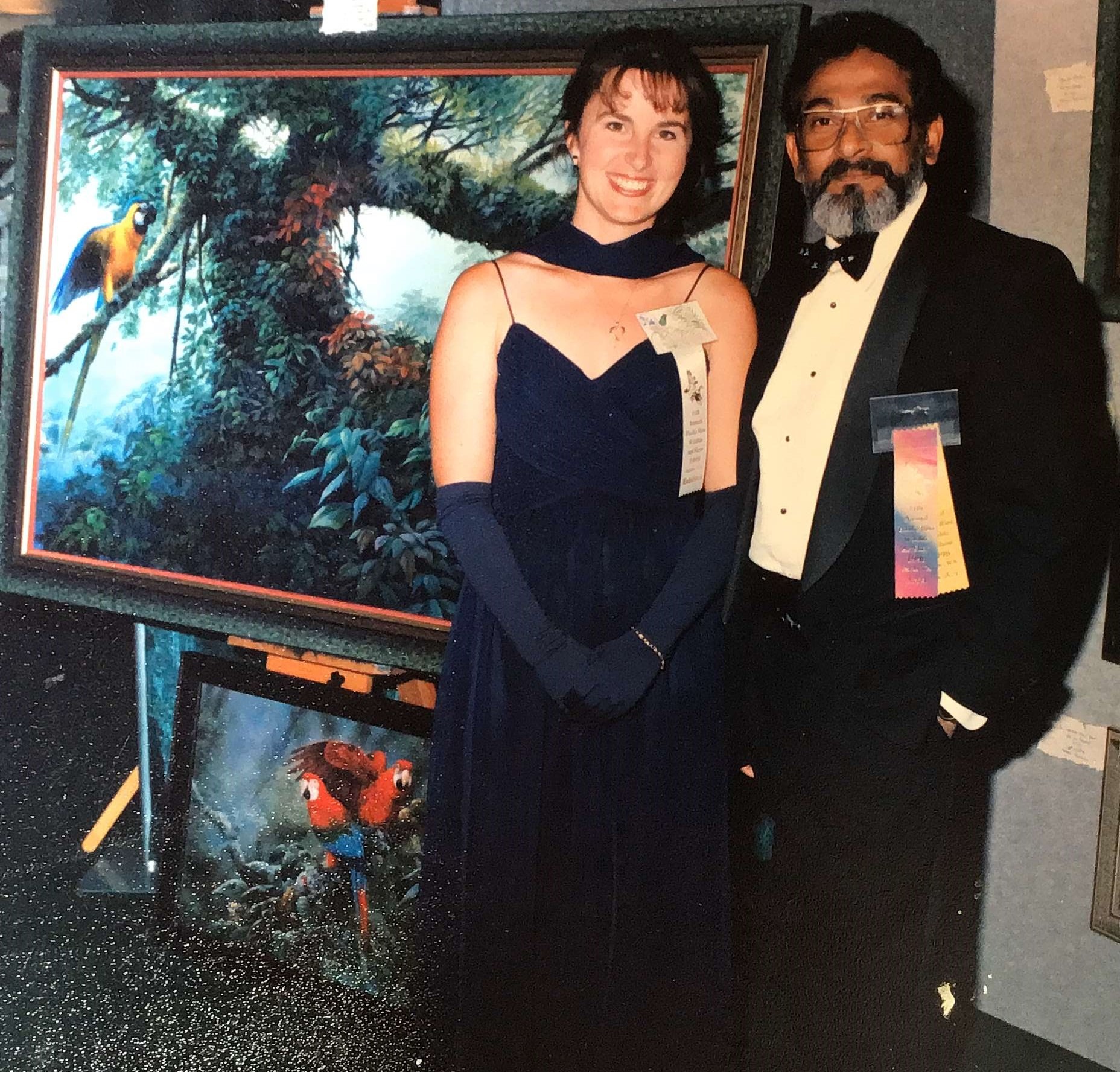
As a self-taught artist from a third-world country, achieving these goals and enjoying these opportunities to share my work and the lessons I have learned from nature were beyond anything I had imagined. As a Buddhist child in a Catholic Boarding school, I had a lot of time to paint, draw and explore the forest during religious classes. During this time I studied an elephant ear plant with a raindrop in the center and seeing the perfection and unity of nature, and decided early on that nature would be my teacher. I filled my sketchbooks with studies and observations. As a Buddhist, respect for all life and nature is ingrained in my life philosophy and is a part of my canvas. Being honored as Sri Lankan American of the year by the Sri Lankan Consulate in Los Angeles for my contributions to the art world and conservation was a great honor. My continued participation with the University of Colombo on field guides and educational illustrations is a gift that I return to my native country through my art. It validates my philosophy of sharing “that a road was not built for one to travel upon.”
In the late 1990’s I became a naturalized citizen through study and application, this process was lengthy and very rewarding. I have owned my own business here in California, for over 35 years and have been actively involved in fundraising for wildlife conservation, orphanages, fire and flood victims, and children through my artwork.
The Natalie Ratnavira Education Center in Galle, Sri Lanka is a sanctuary for wildlife and a place for artists, scientists, and conservationists to stay and enjoy the unique species found there. By illustrating, writing, and studying they contribute to this unique rainforest habitat. The Devario Sp. Nataliei fish was one I saw as a child camping with my father and later was bestowed as an honor for our daughter Natalie Ann Ratnavira (Feb. 14, 1990-June 23, 2012). We lost her suddenly to an AVM leading to a brain aneurysm; she was a Wildlife Conservation student at the University of Reno where she played soccer. This legacy in her name is one way of transforming our grief into one of conservation, keeping her smile present with us. In addition, you will notice on each painting there is a dragonfly next to my signature in her loving memory. Our sons Neil, Beau, and Brooks each honor her in the work that they do and in their lives.
Natalie’s Research Center can be viewed at @NatalieRatnaviraDonationFund on Facebook.com. Gamini illustrated Devario Sp. Nataliei for Sri Lankan Fresh Water Fishes by Madura De Silva et al., where the species is dedicated to Natalie on page 155.
As I approach each canvas, I do so with the gratitude of loving what I do, for the past five decades as a professional artist. I relive my experiences through traveling, observing and sketching nature, and the loved ones who have been with me during these adventures.
I begin with a composition in mind, using my sketchbooks and field photos, and apply oil, acryl gouache, watercolor, or acrylic depending on what I am hoping to achieve drawing directly with my brushes. I work from dark to light and use several washes to create light and depth of field, repainting details to build the shadows and signature marks such as sun-edged leaves, insect bites, and leaf litter that are known in my nature embracing canvases. I often paint several canvases at once, especially when working with oils, as my nature is not quite as patient as the paint takes to dry. I feel a strong urgency to create daily and not waste the precious time allotted to each one of us. I do take breaks to work in my garden, with my animals, and on my bonsai as a form of meditation and balance that I take back to each canvas.
My wife Lisa and I enjoy traveling and birdwatching and observing nature together when we are not exhibiting at shows or running the gallery. We enjoy hours of sketching and writing and have collaborated on Traveling with Pen and Brush and Grief’s Labyrinth and Other Poems where I have illustrated her poetry. For over 23 years she has been my Gallery Director, my biggest fan, and my muse.
Thank you for the opportunity to discuss my art journey with you and I hope you enjoy viewing my paintings. For more images please visit www.gaminiratnavira.com.
ANIMAL GROUPS, An Exhibition Produced by David J. Wagner, L.L.C.

A group of paintings of land and sea animals from The Indian Ocean by Gamini Ratnavira will be featured in a new, upcoming exhibition entitled Animal Groups, curated by David J. Wagner, Ph.D. The exhibition will premiere at The Dane G. Hansen Memorial Museum in Logan, Kansas on July 2, 2021, to celebrate the opening of its newly renovated building, and then travel to The Sternberg Museum of Natural History at Fort Hays State University in Kansas for display during the Fall Semester of 2021. The exhibit will feature 9 groups by 9 artists, each represented by five thematically related works to allow visitors to experience the breadth and depth of each artist’s treatment and expression.
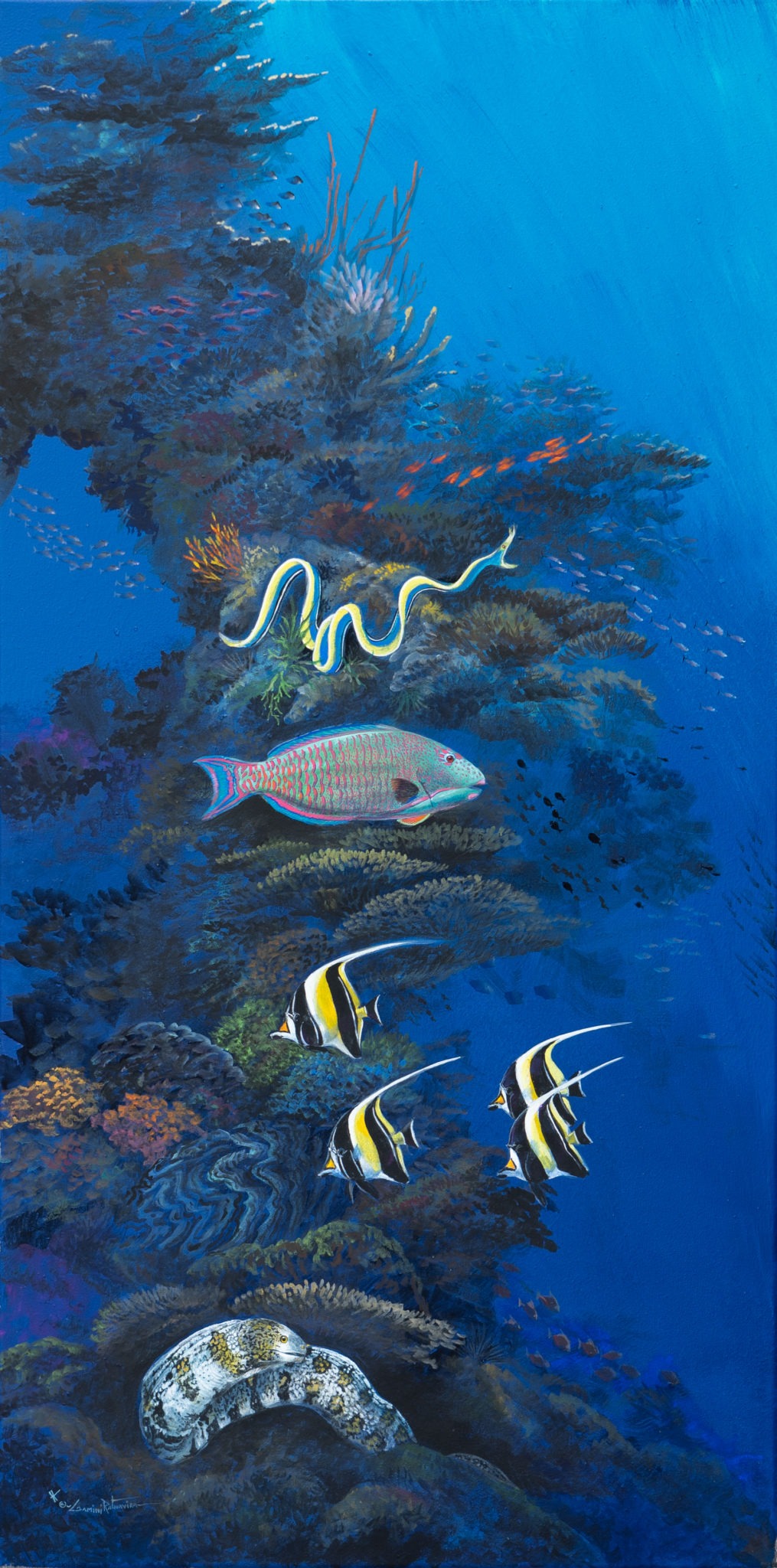
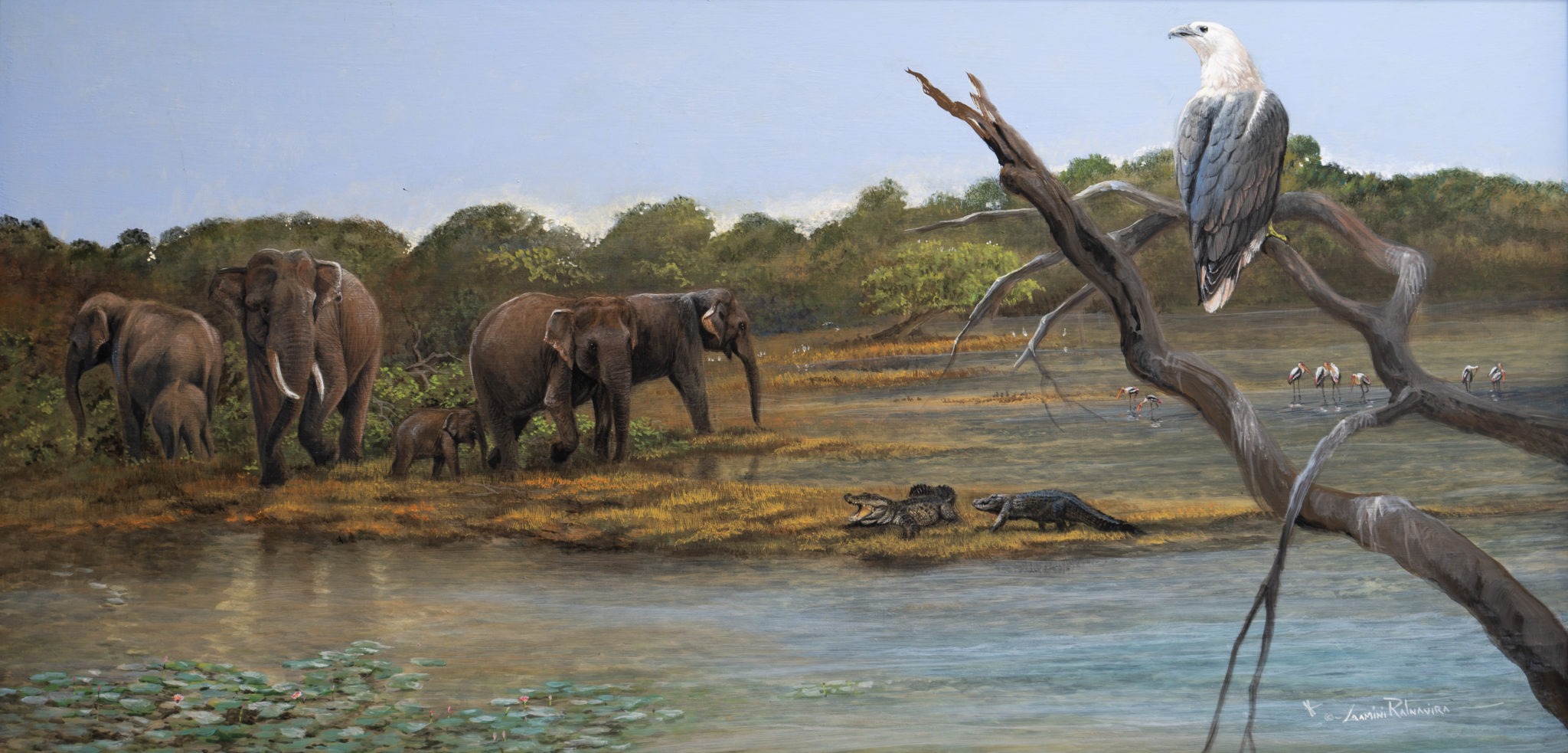
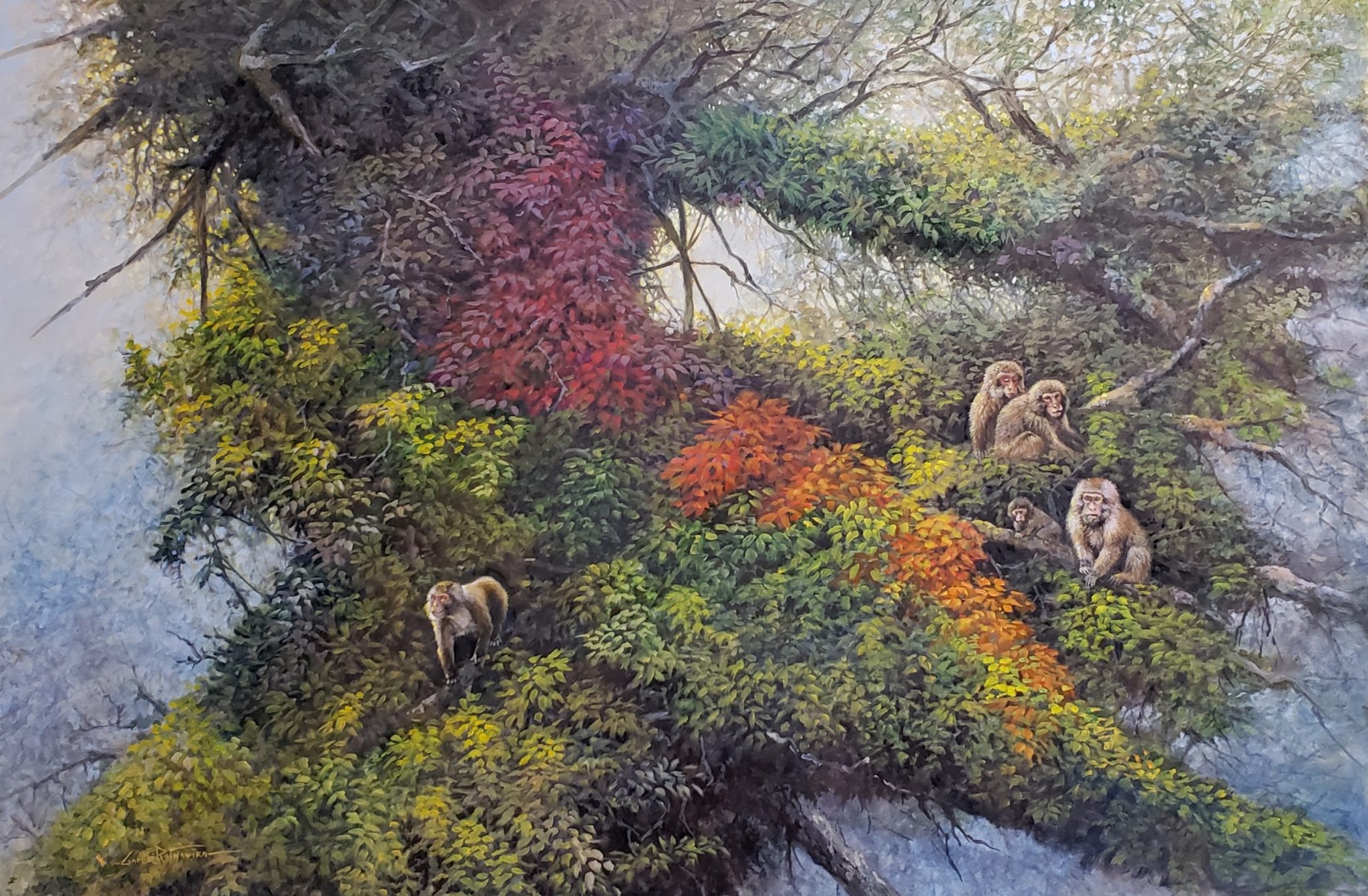
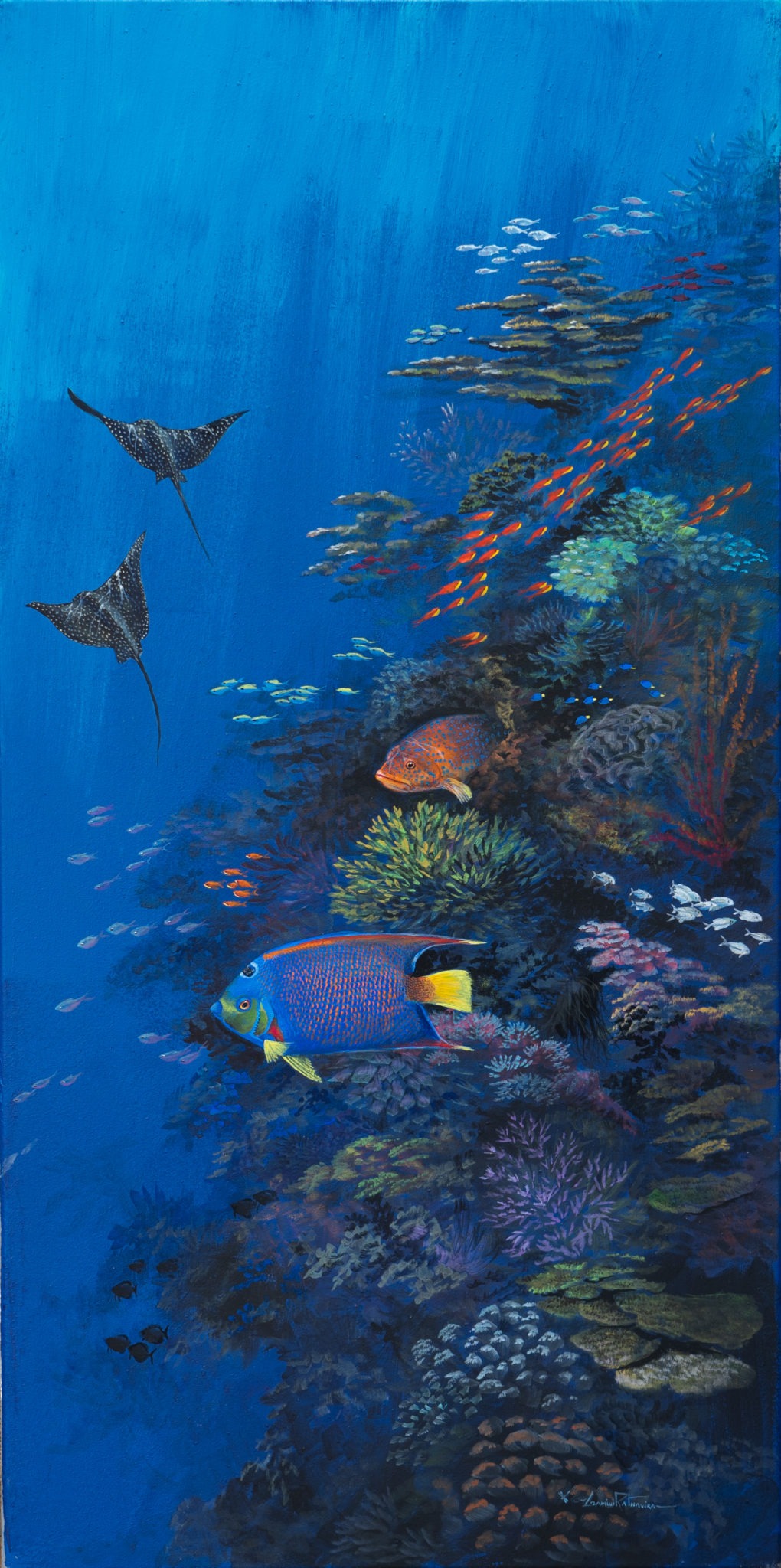
The MAHB Blog is a venture of the Millennium Alliance for Humanity and the Biosphere. Questions should be directed to joan@mahbonline.org

